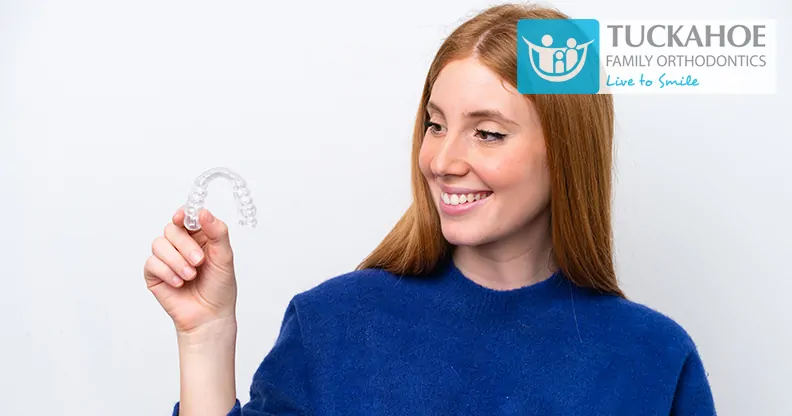Tuckahoe, NY – Every orthodontic patient looks forward to the day their braces or aligner treatment comes to an end. It’s an exciting day, and one to be celebrated for sure. But, that day doesn’t put an end to your orthodontic treatment.
Maintaining Your Smile: The Role of Retainers
“While braces removal days are always a time to celebrate, we also want our patients to know that their work isn’t finished yet,” says Dr. Sam Polan of Tuckahoe Family Orthodontics. “To keep their smiles straight, it’s important to wear your retainers as directed.”
Immediate Post-Treatment Phase
If you don’t wear your retainers, your teeth can shift. And the longer you go skipping your retainer wear, the likelier you are for a relapse. This time immediately following having your braces removed is the most important to wear your retainer regularly. Your teeth can begin to shift out of their new locations very quickly if you don’t wear your retainer.
Your mouth needs time to adjust to your teeth’s new locations. Your braces guided the teeth through the jaw bone, after all. The bone that holds your teeth in place will need time to remodel and rebuild around the new locations. The periodontal ligament will also need to settle into place. It’s elastic, and without your retainer to hold everything, the ligament will have a tendency to pull everything back to where it was.
Recognizing Early Signs of Shifting
Everyone’s teeth are different and some people will experience shifting faster than others. For most people, after a few days or a week of forgetting to wear your retainer, you may start to notice that your teeth have already begun to shift. But it’s not too late – as soon as you remember, put your retainer in so it can go back to work. It will feel tight but will usually still do it’s job if you get back into a good routine of wearing it consistently again.
A Month Without Retainers
After a month of not wearing your retainer, more shifting is likely to occur and your bite may have changed, and you may notice your old smile creeping back. You’ll need to schedule an appointment with your orthodontist to be fitted for a new retainer. Your orthodontist may recommend around the clock retainer wear to get your smile back on track, or in some cases you may even need braces or clear aligners like Invisalign again.
Few Months to Years Without Retainers
After several months or a year of not wearing your retainer, your smile may very well have relapsed completely. If this happens, you may need to revisit braces or Invisalign treatment again to correct your smile.
It’s important to remember that some people will experience relapse much faster than others, so it is recommended to take a better safe than sorry approach with your retainers, which means always being consistent with them and wearing them as prescribed.
The Key to Success: Consistency and Compliance
“Preventing relapse is easy if you wear your retainer as instructed by your orthodontist,” says Dr. Polan. “We know you are excited about your new smile, but we want to ensure that smile lasts. We’ll give you specific instructions for your retainer wear that is unique to your smile. While many of our patients enjoy similar retainer-wearing schedules, every treatment plan is individualized. Some patients have a higher chance of relapse, so their retainer wear may be more involved than others.”
Seeking Assistance and Advice
IF you ever have questions about your retainer wear, or your retainer is lost, damaged, or no longer fits properly, call Tuckahoe Family Orthodontics right away.


No Comments